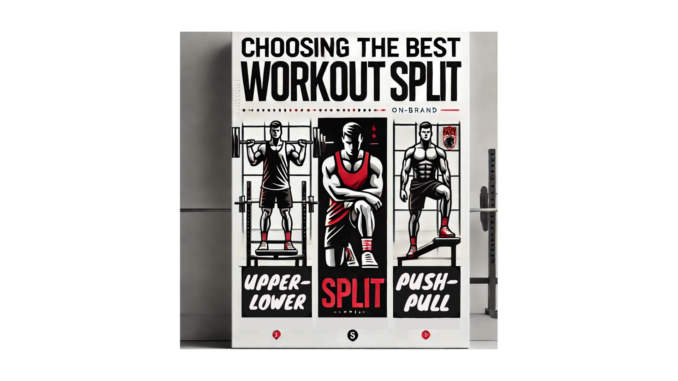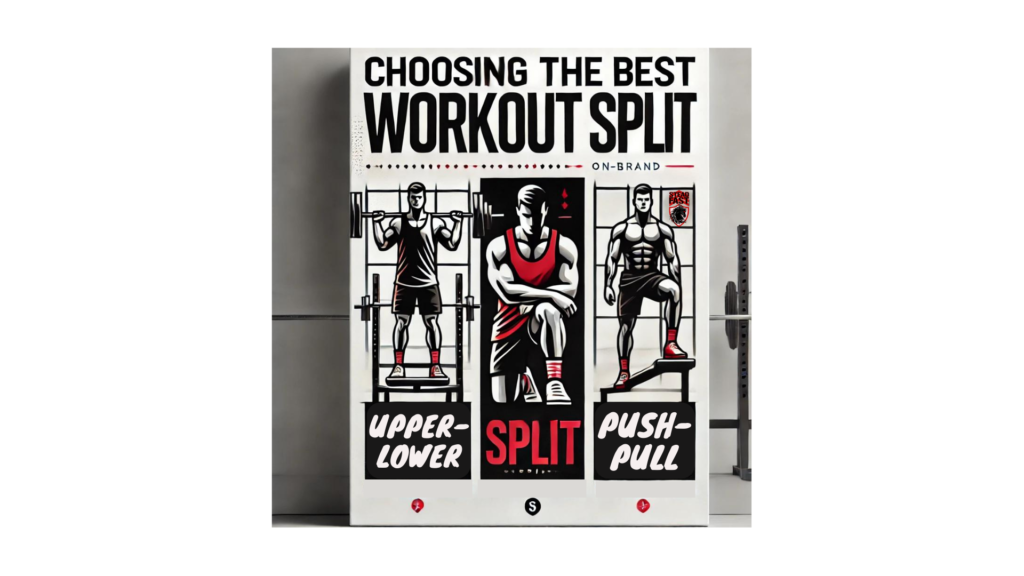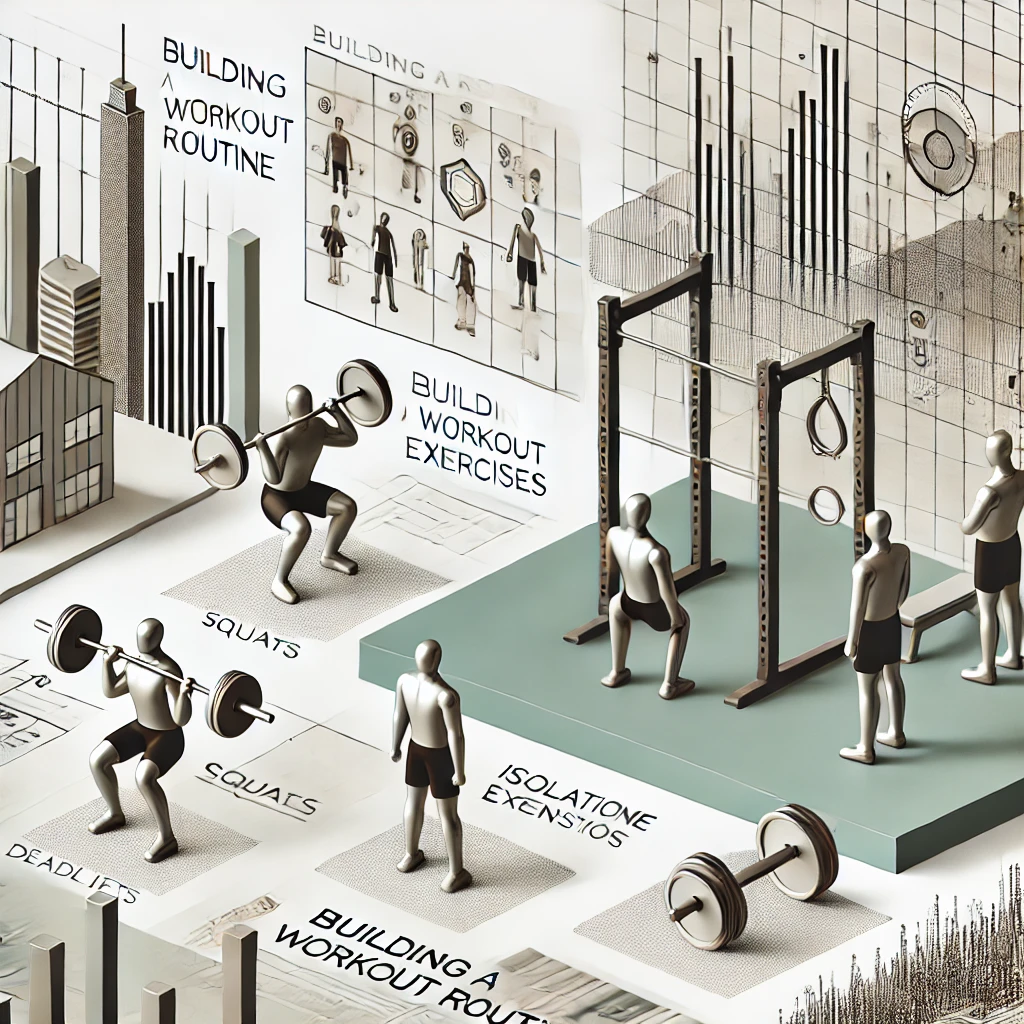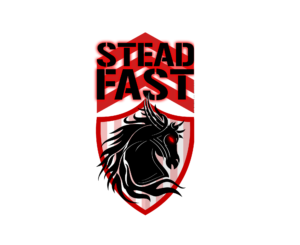
When I first started my fitness journey, choosing the right workout split felt like a daunting task. With so many different options available, it was hard to know which path would give me the best results. Like you, I wanted a routine that fit my busy schedule while also helping me build strength and stay injury-free.
After trying several approaches, I realized that a structured workout split not only gave me focus but also allowed me to recover properly between sessions. Today, I want to share what I’ve learned, so you can choose the best workout split for your fitness goals. Trust me—finding the right plan will make a huge difference in your progress and consistency.
What is a Workout Split?
Before diving into the types of workout splits, it’s important to define what a workout split is. A workout split refers to how you divide your training sessions throughout the week. Instead of working the entire body in one workout, splits allow you to focus on specific muscle groups or movement patterns on different days, which promotes muscle recovery, prevents overtraining, and provides enough intensity to target individual muscle groups.
Why a Workout Split is Important
A well-thought-out workout split ensures that each muscle group receives adequate attention while providing enough rest for recovery. This is especially important for those aged 35-65, as muscle recovery can take longer compared to younger individuals. A good split will help you:
- Prevent injury by avoiding overworking the same muscle group multiple times in a short period.
- Maximize muscle growth and strength by focusing on specific areas of the body.
- Fit your workouts into your schedule, allowing for flexibility and consistency.

The Upper-Lower Split
One of the simplest yet most effective workout splits for beginners and intermediate lifters is the Upper-Lower Split. This split involves alternating between workouts that target the upper body and those that focus on the lower body.
Example Schedule:
- Monday: Upper Body (Chest, Shoulders, Back, Arms)
- Tuesday: Lower Body (Legs, Glutes)
- Wednesday: Rest or Active Recovery
- Thursday: Upper Body
- Friday: Lower Body
- Weekend: Rest or light physical activity, such as walking or yoga.
Benefits for Novices:
- Easy to follow and requires minimal planning.
- Balanced between upper and lower body strength development.
- Ideal for people who can only commit to 3-4 workouts per week.
The Bro Split
The Bro Split is popular among bodybuilders and those looking to dedicate an entire day to each major muscle group. The name might sound casual, but it can be highly effective for building muscle mass, especially for those with more experience in the gym.
Example Schedule:
- Monday: Chest
- Tuesday: Back
- Wednesday: Shoulders
- Thursday: Arms
- Friday: Legs
- Weekend: Rest
Push, Pull, Legs Split
The Push, Pull, Legs Split is a versatile and highly effective option that combines some of the best elements of other splits. In this approach, you divide your workouts based on movement patterns rather than muscle groups. This split is fantastic for both muscle growth and functional strength.
Example Schedule:
- Monday: Push (Chest, Shoulders, Triceps)
- Tuesday: Pull (Back, Biceps)
- Wednesday: Legs (Quads, Hamstrings, Glutes)
- Thursday: Rest or Active Recovery
- Friday: Push
- Saturday: Pull
- Sunday: Legs

Stay Consistent and Track Your Progress
No matter which workout split you choose, consistency is key to seeing results. Stick with your plan for at least 4-6 weeks, track your progress, and make adjustments as needed. One of the best ways to stay on track is by using fitness tools like a fitness tracker, smart scale, and a workout journal.
To help you stay consistent and motivated, consider using a fitness tracker like the Fitbit or Apple Watch. These devices not only track your steps and heart rate but also provide insights into your workout intensity and recovery, making it easier to stay on top of your fitness goals.
Additionally, logging your workouts is a great way to measure your progress over time. A simple workout journal or an app like Strong allows you to track your sets, reps, and weights for each exercise, so you can see your strength improve week after week.
If you’re serious about tracking your body composition, a smart scale like the Withings Body+ or Eufy Smart Scale is another valuable tool. These scales provide detailed information on metrics like body fat percentage, muscle mass, and water retention, helping you get a full picture of your health and progress.

Building Your Routine
Once you’ve chosen your workout split, the next step is creating a balanced and effective routine. This involves selecting exercises that target all major muscle groups while keeping your workouts both challenging and enjoyable. When building your routine, it’s important to focus on two types of exercises:
- Compound Exercises: These movements engage multiple muscle groups at once and are essential for building overall strength. Exercises like squats, deadlifts, bench presses, and rows should form the foundation of your routine. They help improve functional strength and burn more calories due to the large number of muscles involved.
- Isolation Exercises: These exercises focus on one specific muscle group at a time, helping to refine and tone your physique. Bicep curls, tricep extensions, leg curls, and lateral raises are examples of isolation movements that allow you to target smaller muscle groups for balance and symmetry.
Example Upper Body Day (Upper-Lower Split):
- Bench Press (Compound): 4 sets of 8-12 reps
- Lat Pulldown (Compound): 4 sets of 8-12 reps
- Dumbbell Rows (Compound): 3 sets of 10-15 reps
- Bicep Curls (Isolation): 3 sets of 12-15 reps
- Tricep Dips (Isolation): 3 sets of 12-15 reps
Example Lower Body Day (Upper-Lower Split):
- Squats (Compound): 4 sets of 8-12 reps
- Deadlifts (Compound): 4 sets of 8-12 reps
- Leg Press (Compound): 3 sets of 10-15 reps
- Leg Curls (Isolation): 3 sets of 12-15 reps
- Calf Raises (Isolation): 3 sets of 12-15 reps
If you’re unsure how to structure your workouts or need more guidance on what exercises to choose, we can help! Our 1-on-1 personal training service is perfect for anyone looking for personalized coaching. Whether you’re a novice who needs a structured plan or someone with experience looking to break through a plateau, our expert trainers will design a custom program tailored to your specific goals, fitness level, and schedule. Click here to learn more and start working with a personal trainer today!
Subscribe to Stay Updated!
Are you ready to take your fitness journey to the next level? Sign up for our newsletter to receive weekly workout tips, nutrition advice, and motivation delivered straight to your inbox. Plus, get access to exclusive content designed to help you reach your goals faster. Don’t miss out!
By choosing the right workout split and sticking to your plan, you’ll see steady improvements in strength, fitness, and overall health. Remember, fitness is a journey, and with the right guidance, you can enjoy every step along the way. Happy training!

